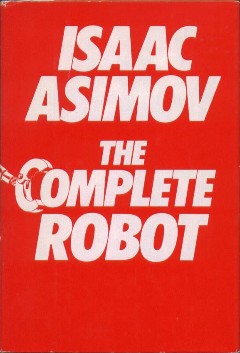 First edition | |
| Author | Isaac Asimov |
|---|---|
| Cover artist | Kiyoshi Kanai |
| Language | English |
| Series | Robot series |
| Genre | science fiction |
| Publisher | Doubleday |
Publication date | 9 April 1982 [1] |
| Publication place | United States |
| Media type | |
| Pages | 557 |
| ISBN | 0-385-17724-0 |
| Preceded by | I, Robot |
| Followed by | Robot Dreams |
The Complete Robot (1982) is a collection of 31 of the 37 science fiction short stories about robots by American writer Isaac Asimov, written between 1939 and 1977. [2] Most of the stories had been previously collected in the books I, Robot and The Rest of the Robots , while four had previously been uncollected and the rest had been scattered across five other anthologies. They share a theme of the interaction of humans, robots and morality, and put together tell a larger story of Asimov's fictional history of robotics. The stories are grouped into categories.